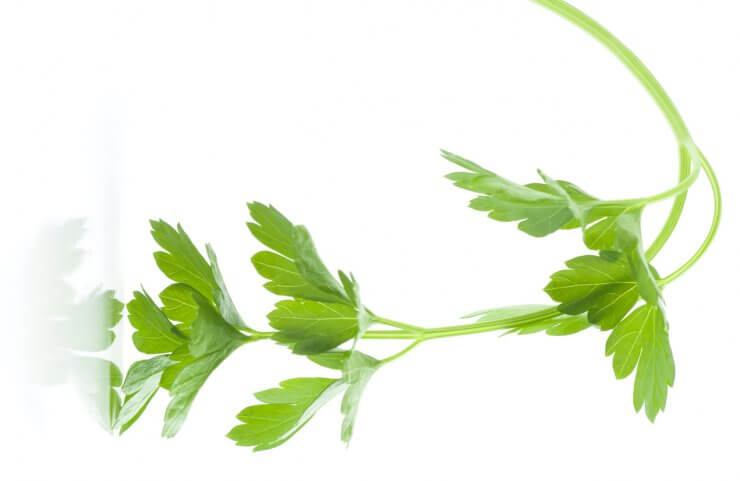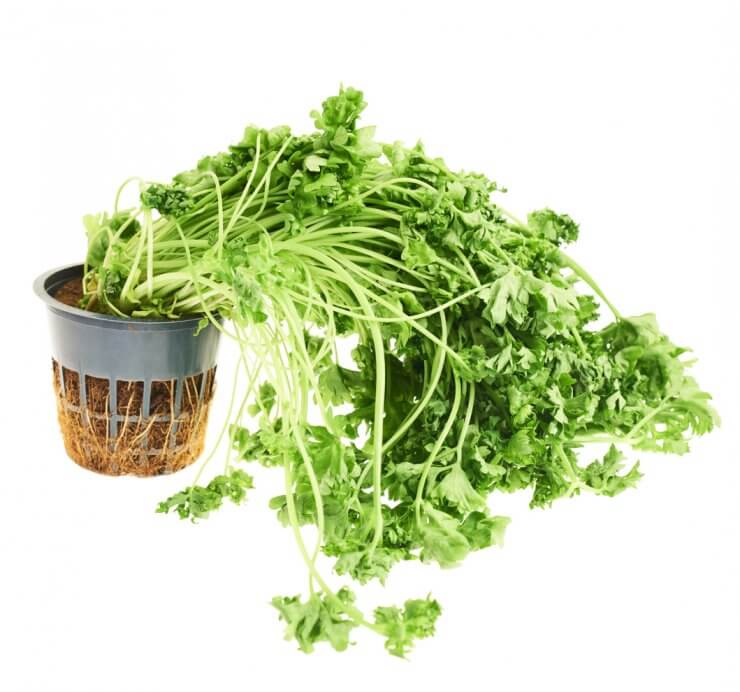
Withered parsley
Parsley, is susceptible to developing fungal and bacterial infections, however, air and sunlight are some of the best remedies for these types of afflictions.
The most common problem for parsley plants is fungal disease. These come in many forms and generally afflict plants in moist regions or when unseasonably wet, warm weather is present. Soil-borne pathogens transmit to the plants from the roots or by splattering onto the leaves. Overhead watering and improper circulation encourage the formation of fungal spores. Cultural care is essential to preventing these forms of parsley plant diseases. Good cultural practices include providing plants the best possible growing situation: proper spacing, watering, sanitation, mulching, fertilization, and general maintenance practices.
- Crown/root rot: Crown and root rot are associated with soggy soil. The perpetrators are both a fungi and bacteria found in soil that burst into action when the ground is moist. Leaves turn yellow and brown followed by stems and the entire plant discoloring and dying. Roots will blacken and decay and new shoots will not form.
- Leaf Spot: Another of the common problems with parsley plants is leaf spot, caused by the Septoria fungus. Yellow spots show up on the foliage and darken to brown with a golden halo. Leaves wilt and occasionally fall off. The entire plant is weakened by the disease. The fungus is seed borne or splashed onto plants. This is considered the most important of the parsley plant diseases and has caused entire crops to fail.
- Blight: Blight is caused by the fungus Botrytis and is also called gray mold. The disease starts out with brown to black spots on the leaves. White-gray fungal growth is sported on all leaf surfaces over time. Leaves fail to thrive and die.
Treating Parsley Diseases

Wilted parsley
There are a few varieties of parsley that are resistant to the most common diseases, among them is “Paramount,” a curly-leafed variety. If seed is not available from one of the resistant varieties, cultural control is often effective at combating these diseases.
Use a drip line to water plants and irrigate in the morning so there is plenty of time for the parsley to dry.
Practice crop rotation to prevent soil borne pathogens from infesting successive crops.
Plant parsley in a sunny location and thin the seedlings to encourage air circulation. Air and sunlight are crucial to treating parsley diseases.
Some fungal diseases will respond to sulfur fungicide applied at the first sign of infection. If plants are already heavily infested and failing, pull them up, discard them and start anew.
And here are two key parsley-tending techniques that will serve you well:
Water your parsley properly
Don’t under-water or over-water your parsley plants. By keeping a regular watering schedule, you’ll keep your plants vibrant and healthy. Over-watering and watering directly on the plants—instead of the preferred watering method, directly at the stem on the soil—leads to consistently wet conditions, which allows bacteria and fungi to thrive and multiply.
Destroy infected plants
Throw away or burn infected parsley plants. Don’t keep infected plants over the winter in your garden, and don’t throw them on your compost pile. Disease-ridden plants, even when dead, will spread the disease to other plants or even your soil.
Have you had problems with diseases attacking your parsley plants? What types of problems do you regularly face with your parsley? Please tell us how you treat and prevent diseases from destroying your parsley crop.


 Previous
Previous

